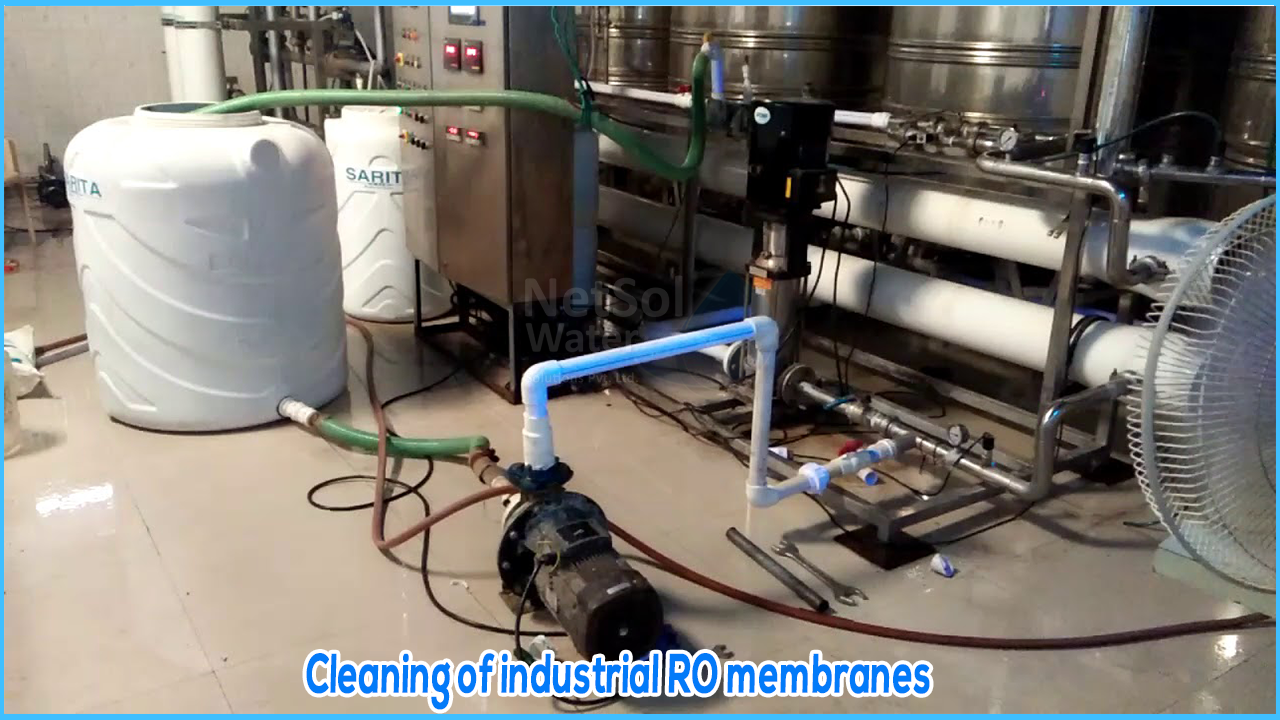INTRODUCTION
Desalination membranes are now made out of thin polyamide sheets folded into a hollow tube. Increasing the diameter of the membranes, which is directly proportional to how much freshwater they can produce, is one approach to save energy. Companies are rapidly switching from eight-inch to sixteen-inch membranes, which have four times the active area of the whole plant.
A lot of membrane research is focused on nanomaterials — materials about 100,000 times smaller than the diameter of a human hair. In 2012, MIT researchers announced that a membrane composed of graphene, a one-atom-thick sheet of carbon atoms, might operate just as well as polyamide, which is nearly a thousand times thicker, and requires less pressure to pump water through. Less pressure implies less energy is required to run the system, resulting in cheaper energy bills.
RO MEMBRANE CLEANING
Now that the membranes are such an important part of an industrial RO plant, so it does require a regular and good maintenance throughout the life of a plant.
Due to deposits on the membrane surface, reverse osmosis (RO) membrane elements become fouled over time. The RO permeate flow rate falls when the membrane becomes clogged. Minerals are concentrated even more at the membrane surface as they are trapped by foulants, which causes the permeate conductivity to rise.
Mineral scale, silt, organic substances, and bacteria are all examples of deposition. Mineral scale forms in the last membranes of a RO system because minerals are most concentrated and thus more likely to precipitate there. Calcium carbonate, calcium sulphate, barium sulphate, and silica are the most prevalent forms of scale.
Membrane cleaning can be done in two main ways.
-
1. Predictive or preventive cleaning:
- Membrane cleaning is done on a regular basis with this method before fouling has a substantial influence. Cleaning the membrane surface and maintaining RO performance at design conditions is easier when foulants are removed before they get compacted.Forwardflush, backward flush, and air flush are three distinct membrane cleaning methods.
- FORWARD FLUSH
Membranes are flushed forward with feed water or permeate when forward flush is used. During the feed water or permeate flow phase, the water or permeate flows through the system more quickly than during the production phase. Particles that have been absorbed by the membranes are liberated and discharged as a result of the faster flow and turbulence.
The barrier responsible for dead-end management in a membrane is opened when forward flush is used. The membrane is briefly doing cross-flow filtration without producing permeate at the same time. The goal of a forward flush is to remove a built-up layer of pollutants from the membrane by generating turbulence. During forward flush, a significant hydraulic pressure gradient is required.
- BACKWARD FLUSH
A reversed filtration process is known as a backward flush. The pores of a membrane are flushed from the inside out when a backward flush is used. Because the pressure on the permeate side of the membrane is greater than the pressure inside the membranes, the pores are cleansed. A backward flush is performed at a pressure roughly 2.5 times that of the producing pressure.
Because the permeate chamber must always be clear of contamination, permeate is always used for a backward flush. A decrease in process recovery is a result of backward flushing. As a result, a backward flush must take the shortest amount of time possible. The flush must, however, be kept going long enough to flush the volume of a module at least once.
- AIR FLUSH/WATER FLUSH
The Air flush or air/water flush is a modern cleaning method. This is a forward flush that involves injecting air into the supply line. During air flush, fouling on the membrane surface must be eliminated as thoroughly as feasible.Using an air/water mixture to flush the inside of membranes is known as air flushing.
Adding air to the forward flush during an air flush causes air bubbles to develop, increasing turbulence. Fouling is eliminated from the membrane surface as a result of the turbulence.
The air flush has the advantage of using less pumping capacity during the cleaning procedure than the forward flush.
When the above-mentioned cleaning methods fail to lower the flow to an acceptable level, chemical cleaning of the membranes is required.
-
2. Chemical cleaning
During backward flush, chemicals like hydrogen chloride (HCl) and nitric acid (HNO3), as well as disinfectants such as hydrogen peroxide (H2O2) are added to the permeate. The chemicals must soak in, once the entire module has been filled with permeate. The module is flushed and eventually put back into production after the cleaning chemicals have fully soaked in.
Membranes are bathed in a solution of chlorine bleach, hydrochloric acid, or hydrogen peroxide during a chemical cleaning process. The solution soaks into the membranes for a few minutes before being flushed out with a forward or backward flush, which removes all the impurities.




